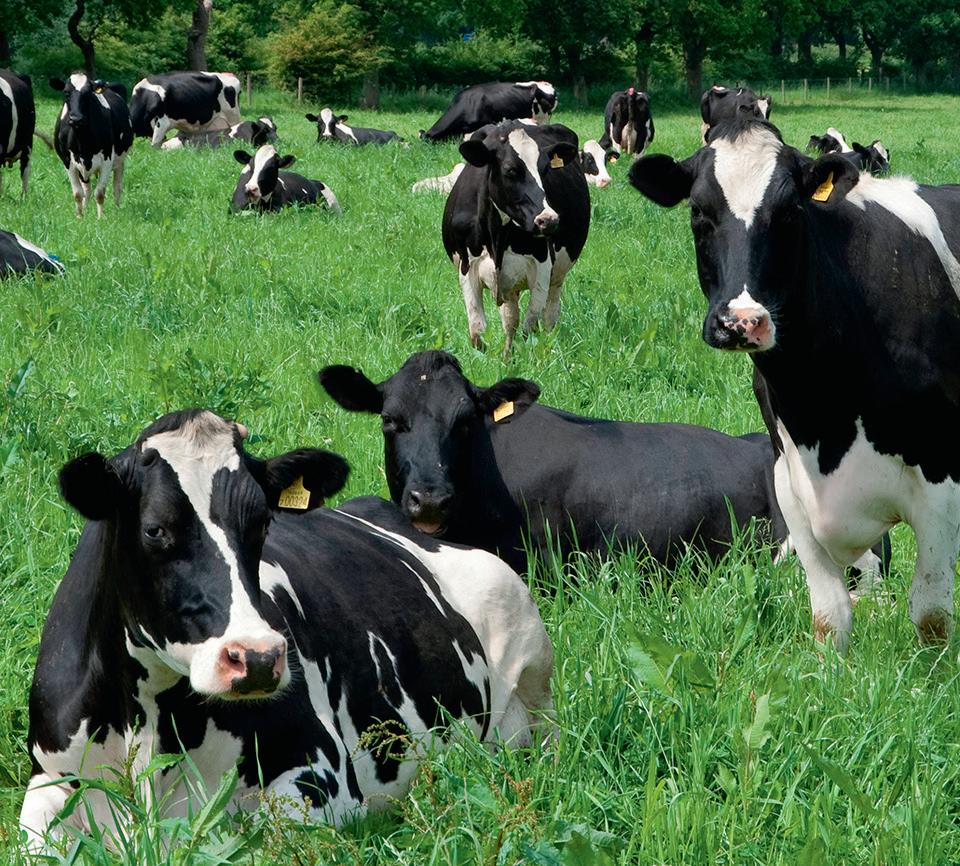
3 minute read
Plan to prevent staggers hitting margins at turnout
Ashortage of winter forages may lead to an earlier turnout in many parts of the country which could increase the risk of grass staggers this spring, according to Alicia Bexon, ruminant nutritionist at Trouw Nutrition GB.
“The final consequences of the difficult 2022 forage season across much of the country is that dairy farmers may be forced to get cows out earlier. While grazed grass can reduce the forage dry matter intake, it will be important to take steps to reduce the staggers risk.
“Flushes of grass and a rapid change in nutrient profile between silages and grass are classically associated with magnesium issues, yet a high proportion of overwintered grass can also increase the risk of staggers, so you need to be mindful of both situations.”
Grass staggers occurs when there is a dietary shortage of magnesium leading to low levels in the blood. Magnesium affects everything from energy metabolism and protein synthesis to cell growth. It is vital for skeletal structure and bone formation with 60-70 per cent found in the bones.
Calcium
It plays a key role in calcium absorption, increasing calcium availability to the cow and helping reduce the risk of milk fever at spring grass.
“It is important for transmission of signals in the nervous system, which contributes to some of the clinical signs associated with staggers including restlessness, nervousness, lack of co-ordination and muscle spasms. The major driver for a cow’s magnesium requirement is milk yield which explains why staggers can be more of a problem in higher yielding cows.”
Ms Bexon points out that several factors will influence how much magnesium a cow is able to consume. Any magnesium taken in from the diet has to be made soluble in the rumen before it can be absorbed.
Solubility increases at lower rumen pH. The high sugars in spring grass help to lower pH but in over-wintered grass sugars can be lower reducing the magnesium absorbed. She advises regular forage analysis to monitor grass quality.
High nitrogen
High nitrogen in the diet will also affect absorption as it leads to excess ammonia production which increases rumen pH, so diets need to be carefully formulated.
Rumen passage is also a key consideration. If rumen passage rate is high which is typical with low fibre spring grass there will be reduced time for magnesium to be absorbed. Any unabsorbed magnesium is just excreted and reserves within the cow are not readily mobilised. Therefore the diet must be balanced accurately in order to meet the animals daily magnesium requirements.
“The amount in the plant itself will be affected by the soil. High potassium levels in the soil and plant will reduce magnesium absorption so she advises analysing slurry and taking soil analysis to understand potassium status and modify slurry applications accordingly.
The first sign of a staggers problem is usually reduced feed intakes but as it can take just six hours from initial clinical signs to death, Ms Bexon stresses the importance of adequate preventative measures.
“With high feed costs it may be temping to cut back on magnesium supplementation but the consequences could be significant. While losing an animal is the biggest financial loss, staggers can also reduce milk yields and depress margins, so effective prevention by ensuring sufficient magnesium intakes to match requirements is key, especially in the early season when grass availability and quality can vary considerably.”
Compounds
Several magnesium salts are commonly used for supplementation, mainly magnesium chloride, phosphate, sulphate or oxide. They can be supplied in a variety of ways.
Compounds are one way to ensure every cow gets additional magnesium, but the quantities can be small when cows are receiving little or no compound at grass.
If cows are turned out early and just by day, change to a higher magnesium mineral in the buffer feed or evening TMR. This can ensure all cows are adequately supplemented through the grazing season.
Free access minerals and blocks or licks can contain high levels of magnesium and are a convenient way of supplementing animals at grazing. The challenge is ensuring adequate intakes per animal.
This can be improved by having the correct ratio of blocks to animals and carefully monitoring intakes. Finally, magnesium can be added to water but again monitoring intakes can be difficult.
Good artificial insemination (AI) protocols are helping a Carmarthenshire dairy farm achieve a six-week in-calf rate of more than 80 per cent. Farmers Guardian reports.
Iwan Francis runs a split block calving herd of 200 Friesian cross cows at Nantglas, Talog, where he does his own AI.
Through the farm’s work as a Farming Connect demonstration site, Mr Francis has been working with vet Kate Burnby to improve herd fertility. He has achieved this by reducing the 12-week empty rate from 14 per cent to 5 per cent within two-anda-half years and increasing six-week in-calf rates from 71 per cent to more than 80 per cent.
During a recent Farming Connect open day at Nantglas, Ms Burnby said that while there are many factors which contribute to good herd fertility, with Mr Francis focusing on calving records, disease status, AI protocols and heat detection, other factors taken into consideration are nutrition, cow comfort and handling systems.
Ms Burnby gave advice to farmers attending the event on best AI practice, including preparing the straw, flask management and good stock handling facilities.
Careful storage, handling and thawing of bull semen is an important consideration.










